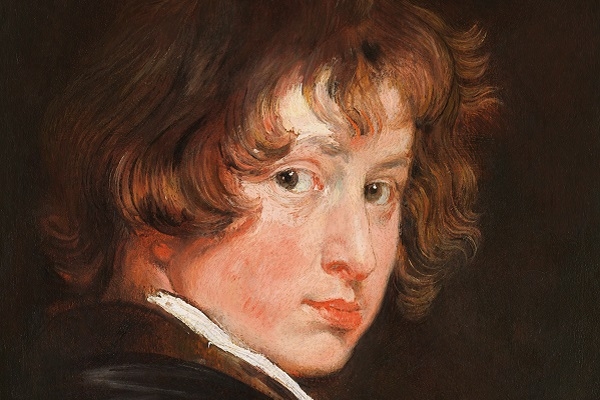Precocious genius will never fail to impress. But it is also very hard to relate to. Aged 14, Anthony Van Dyck painted a Portrait of a Seventy-Year-Old man that looked like a portrait by a seventy-year-old man, signed it, and marked it with his age, the idea being that the younger you are, the more impressive you are.
And Van Dyck was impressive. Looking at the work he produced in his teenage years, it’s hard not to think of Julius Caesar, sniveling before a statue of Alexander the Great because he achieved so much, so young. Frankly, I feel like a loser.
Which is why The Young Van Dyck, edited by Alejandro Vergara and Friso Lammertse, is a welcome read. It shows that, far from striding out like a lone pony with a golden nose, Van Dyck was saddled like the rest of us with rules to observe and masters to appease as he discovered his own artistic language.
The son of a silk merchant and a woman of means, Anthony Van Dyck (1599-1641) trained first in his native Antwerp before leaving for a five-year sojourn in Italy at the age of 22. By then ‘Van Dyck had produced a larger and more accomplished body of work than many artists achieve in a whole lifetime. Even if he had only worked during this short span of years, he would still be among the most important European painters of the seventeenth century’. The Young Van Dyck looks at these early artworks, and includes a detailed catalogue of them.
Van Dyck was apprenticed first to the artist Hendrik van Balen. While learning his skills, Van Dyck was obviously keen to create his own style from very early on. His first self-portrait, which Vergara and Lammertse date to c.1615 (others have put it nearer 1620) is not at all like his master’s work. The thick, expressive brushstrokes, which would characterise his later work, give his youthful face movement, so you can almost see him moving back and forth between canvas and mirror. The author of this catalogue entry suggests that it is less a self-portrait than a tronie, or head study focused on expression, but I found this argument unconvincing.
After van Balen, the artist progressed to Rubens’ workshop. While ‘painting like Rubens and painting for Rubens could only bring success’, working under so great a master had its strains. The Young Van Dyck illustrates excellently the tension between the young artist’s desire to find his own style, and desire to adapt to Rubens’ way of doing things.
Take Van Dyck’s Christ Crowned with Thorns (c.1618-20). His first version of the painting (Van Dyck often painted several versions of each picture) is based on Rubens’ painting of the same title, which he perhaps knew through sketches. Rubens might even have instructed him to use it. Several of the figure types in the painting are based on Rubens’ earlier works. Van Dyck’s second version built on the first, and while heavily indebted to Rubens’ style in its figures, clearly benefitted from the young artist’s efforts to make it his own: the people peeping in through a window, the patches of heavy paint.
Van Dyck’s preference for canvas over wood panel complimented his passion for expressive brushwork. In this regard, the authors of this book show how his paintings must have seemed at the time, especially, more Italian than Northern European, more Late Style Titian than Rubens or Brueghel the Elder.
Since it is largely catalogue, The Young Van Dyck will be indispensable to art historians; it is especially strong on provenance. But the first part of the book is utterly approachable. It is through Van Dyck’s art than one understands what it meant to be a young artist in the seventeenth century. The authors’ promise at the beginning of the book is certainly fulfilled: ‘In the end, it is the art of the young Van Dyck that leads us to the person’.
The Young Van Dyck edited by Alejandro Vergara and Friso Lammertse is published by Thames & Hudson. (£45)






Comments